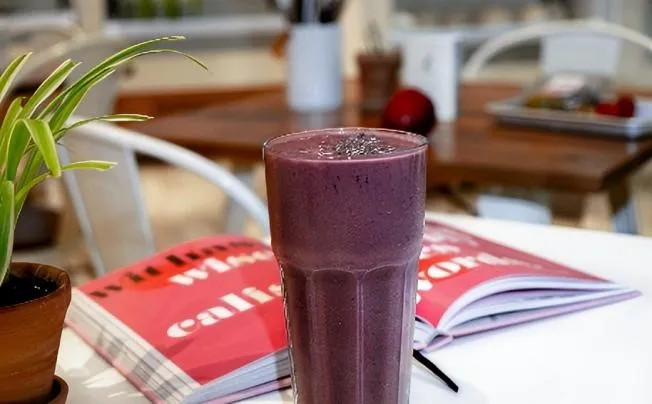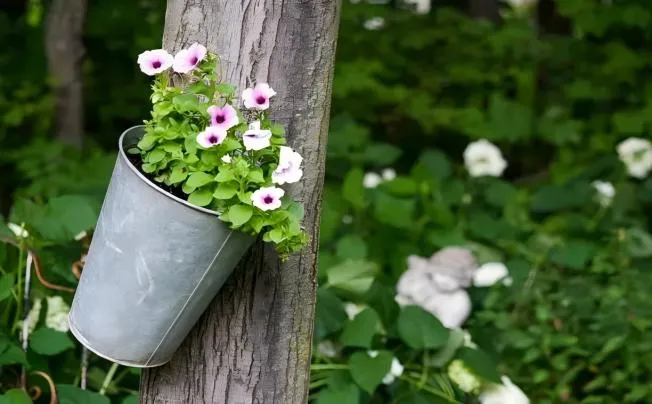How Long Does Galvanized Flower Pot Last In Soil?
How long can galvanized flower pots stay in the soil? This not only affects whether our gardening investment is cost-effective, but also affects the stability of the plant growth environment.
Factors affecting the life of galvanized flower pots
pH of the soil
The galvanised coating will undergo a chemical reaction with the rich acidic compounds in the soil. The galvanised coating is continuously eroded by acidic chemicals, which leads to the progressive dissolution of zinc and significantly reduces the flower pot's lifespan. Even though chemical reactions will take place in alkaline soil, the rate at which alkaline materials erode the galvanised layer is often slow. The galvanised flower pot's lifespan will be comparatively prolonged in such a soil condition.
Moisture content of soil
Long periods of damp soil can accelerate the corrosion of the galvanised layer by facilitating an easier reaction between oxygen and metal. It is easy for a thin layer of water film to build on the flower pot's surface in a humid atmosphere. A number of intricate electrochemical corrosion processes will be triggered by this water film's interactions with soil electrolytes and atmospheric oxygen. Certain coastal regions have relatively humid soil and high air humidity.
When utilised in such an environment, galvanised flower pots may rust rather quickly. Conversely, the absence of moisture in a dry soil environment will significantly slow down the rate at which metal and oxygen react, as well as the rate at which corrosion occurs. Because the soil in desert regions is so dry, galvanised flower pots can last a lot longer as long as no other external factors harm them.
The technique of making flower pots
Advanced hot-dip galvanising technology produces flower pots with a thicker, more consistent layer of galvanised metal, which can give the pots more protection. A strongly bonded alloy layer is created during the hot-dip galvanising process when zinc and iron undergo a chemical reaction at a high temperature. In addition to having strong corrosion resistance, this alloy layer strengthens the bond between the matrix and the galvanised layer, giving it greater solidity. On the other hand, certain flower pots that use cold galvanising technique have poor adhesion and comparatively thin galvanised coatings.
During usage, they are more vulnerable to erosion from outside sources, which can lead to the removal of the galvanised coating and reduce the flower pots' lifespan. It is important to consider the flower pot's structural design in addition to the galvanising procedure. Flower pots with a sturdy and sensible design are more resilient to soil pressure and other external factors during regular usage, which lowers the possibility of corrosion from physical harm.

How to extend the life of galvanized flower pots?
1. Select the appropriate soil
When selecting soil, we may have qualified soil testers check the soil's pH to make sure it's appropriate for using galvanised flower pots. Lime can be applied to soils that are too acidic to enhance them. To get the soil's pH level close to neutral, 50–100 grammes of lime can be supplied per square metre, depending on how acidic the soil is. Compost and degraded animal dung are examples of organic materials that can be used.
As these organic materials break down, carbonates will be produced that will help balance the soil's acidity, enhance its structure, and improve its fertility and water retention. Sulphur powder, ferrous sulphate powder, etc., can be added to alkaline soil to make it better. After application, 150 grammes of ferrous sulphate powder per square metre can lower the pH by 0.5–1.0 units; 100–200 grammes of sulphur powder per square metre of seedbed can keep it acidic for two to three years.
2. Reasonable upkeep procedures
It is crucial to periodically assess the condition of the galvanised flower pots as part of everyday maintenance. Periodically, carefully inspect the flower pots to see if the coating is damaged or if there are any rust spots on the surface. It is normally advised to perform a thorough examination once a month; however, the frequency of inspections should be increased, particularly following the humid or rainy season.
When dust, dirt, or other stains are discovered on the flower pots' surface, they should be promptly cleaned with clean water to stop the stains from sticking there for an extended period of time and weakening the galvanised coating. To avoid scratching the galvanised layer with sharp objects, carefully wipe with a soft cloth or brush. Galvanised flower pots should be handled carefully to prevent collisions with other objects during transportation and placement in order to preserve the galvanised covering. If damage is discovered to the galvanised layer, it should be fixed promptly. To stop more rusting in the damaged region, you can apply a special galvanised repair paint as directed by the manufacturer.

Selected Blogs
-
What customization services are available for metalworking customization?
2024-12-12
-
What Is The Difference Between A Plant Container And A Raised Bed?
2024-04-23
-
Garden Screening & Fence Panels
2024-04-23
-
Gardening pot selection tips
2024-04-17
-
The function and collocation of horticultural fire pot
2024-04-17


